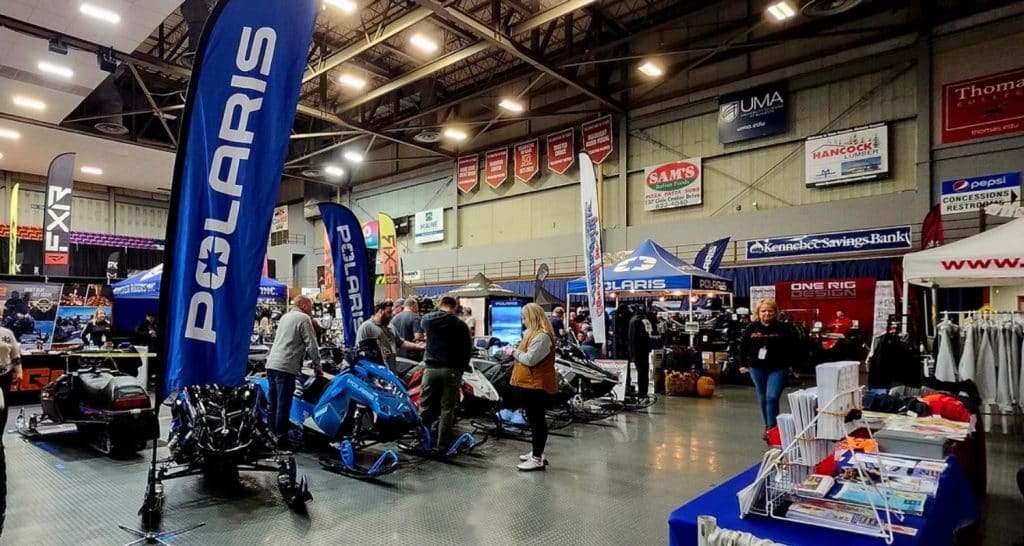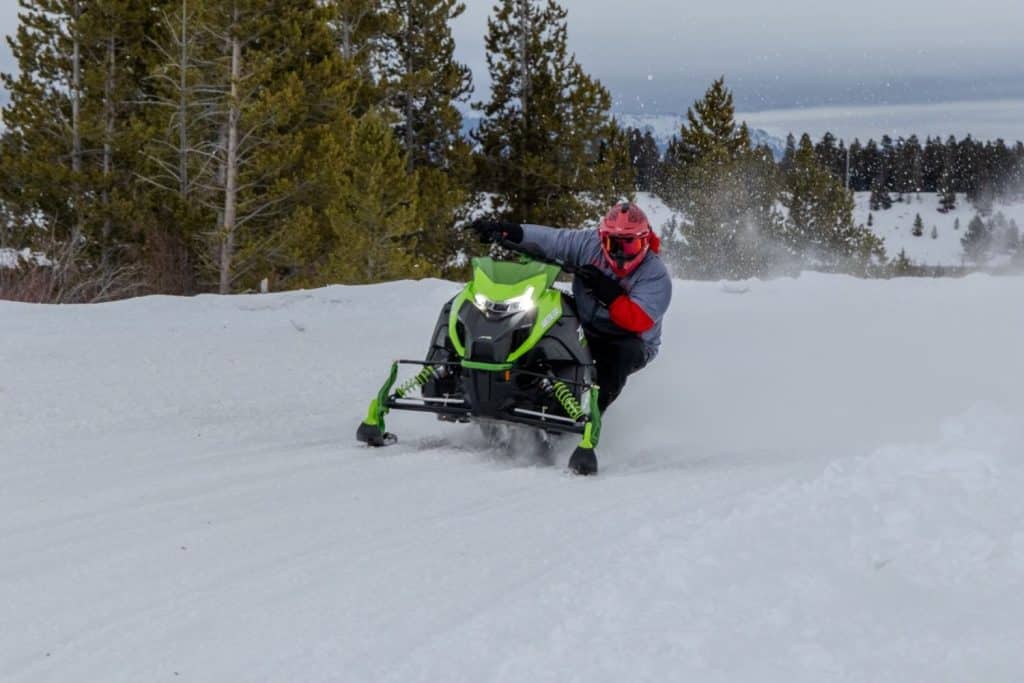Arctic Cat Catalyst, a wind of change for 2024 from the American manufacturer! A new chassis is being introduced for the new season. The last time this was done was in 2012, when Arctic Cat introduced its F-chassis, which linked the famous TwinSpare chassis to the background. The F-chassis has undergone several improvements throughout this decade: seat, grille, instrumentation, etc. It was in 2016 that the company made the decision to trust Team to produce their clutches. 2017 marked the debut of the 800 CC engine, formerly manufactured by Suzuki, and also the arrival of the Yamaha 3-cylinder 1000 turbocharged engine, which is still the most powerful in the industry today. 2024 marks the arrival of a new air, the Catalyst chassis.
The new Catalyst chassis
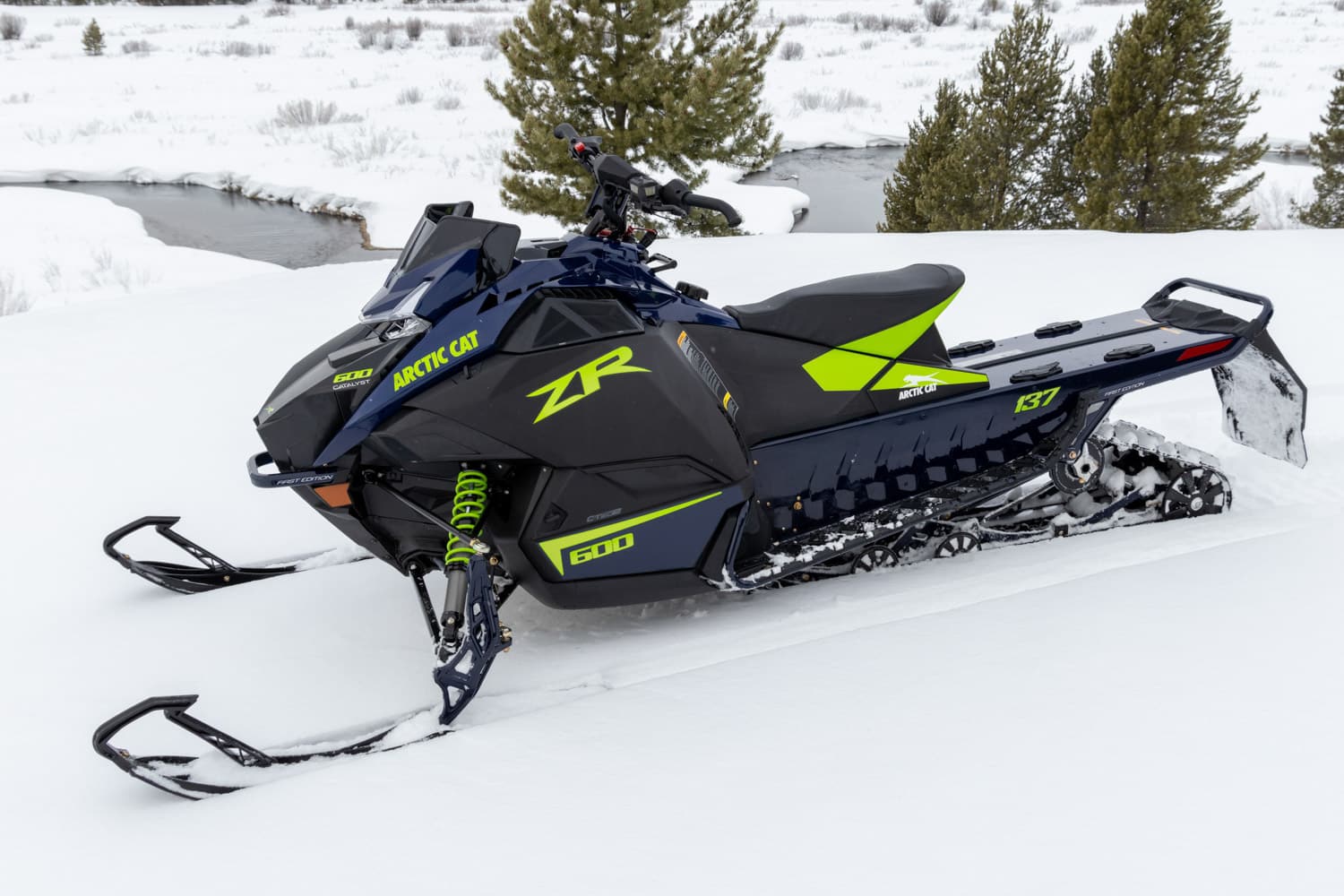
The new chassis is designed in two parts. The front part is made of steel in one piece and offers excellent rigidity. The rear part, commonly called the tunnel, is made of aluminum. The engineers tell us that this is the strongest chassis ever built without looking too big or bulky. And on this point, they have undoubtedly succeeded well… When discussing with the American engineers, they mentioned that the Catalyst has a lower center of gravity. This is despite its higher appearance, because everything revolves around the centralization of the masses. Another point worth mentioning is that all the body parts can be removed very easily and without tools. I can assure you that mechanics will love it! When all the body parts are removed, all the engine components are very easily accessible without clutter.
This new chassis presents us with a very different configuration of the dashboard and instrumentation. Finally, the position of the ignition key is much more user-friendly… Previously located at the bottom of the dashboard next to the digital dial, where it was quite difficult to access, it is now located near the gas cap between the steering column and the seat. We also find the starting rope.
Centralization of the masses
Centralization of weight is definitely the best way to achieve a perfect balance, which gives the rider agility and control. The more the majority of the weight is in the center of the snowmobile and close to the ground, the easier it will be to maneuver. And this new Catalyst chassis adheres perfectly to that concept. The new platform is very narrow! So much so that during our tests, we wondered if this chassis was really full size… When you sit on the sled, you get the feeling of an incredible compact machine. You feel like you can do whatever you want with the snowmobile, and it feels incredibly light!
The main idea of the centralization of the masses is to obtain a superior maneuverability, but also an increased feeling of lightness. No doubt, mission accomplished! When you ride this new chassis, you adopt a really forward position. As a result, the rider is really part of the snowmobile.
EVEN THE WEIGHT OF THE RIDER IS TAKEN INTO ACCOUNT IN THE BALANCE OF THE SNOWMOBILE!
Don’t forget that the pilot can easily represent 25% of the weight of the snowmobile. Therefore, for increased maneuverability, the position of the rider becomes very important. The position of the feet speaks for itself. When you stand, you really have the impression that you are perfectly positioned on the central point of the weight distribution, both front/rear and left/right.
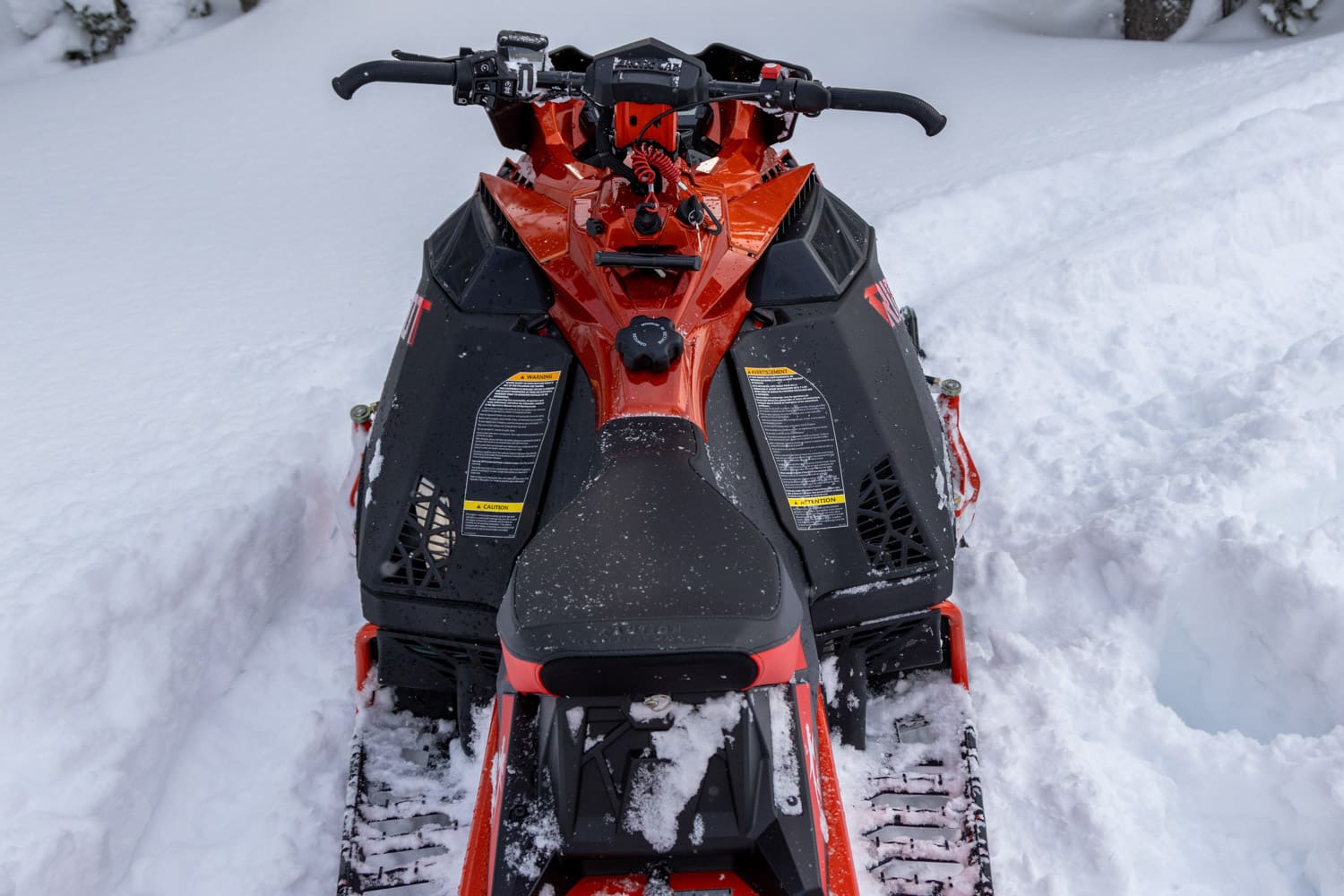
It would be interesting to set up the snowmobile in a front/rear balance on a piece of wood and see the difference when the rider sits upright. In my opinion, there will be very little difference… In the equation, the engine part represents a good percentage of the weight. That’s why the engine is positioned as low as possible in the cabin, to lower the center of gravity. All these little details may seem insignificant, but sometimes the sum of small changes makes a big difference…
Drive belt
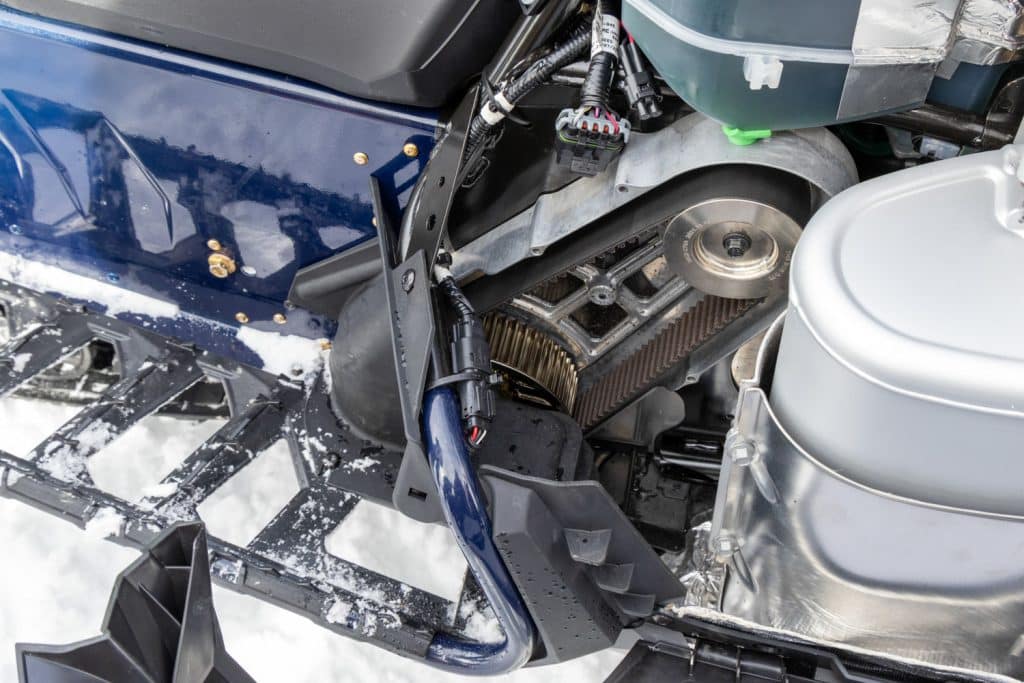
As you know, the passage of power between the driven pulley shaft and the track is done via two gears and a chain. In recent years, the concept of using a belt has made its way into the mountain world. And Arctic Cat engineers have gone so far as to use this concept in their trail models (Catalyst only). Time will tell if this is a wise choice!
Footboards
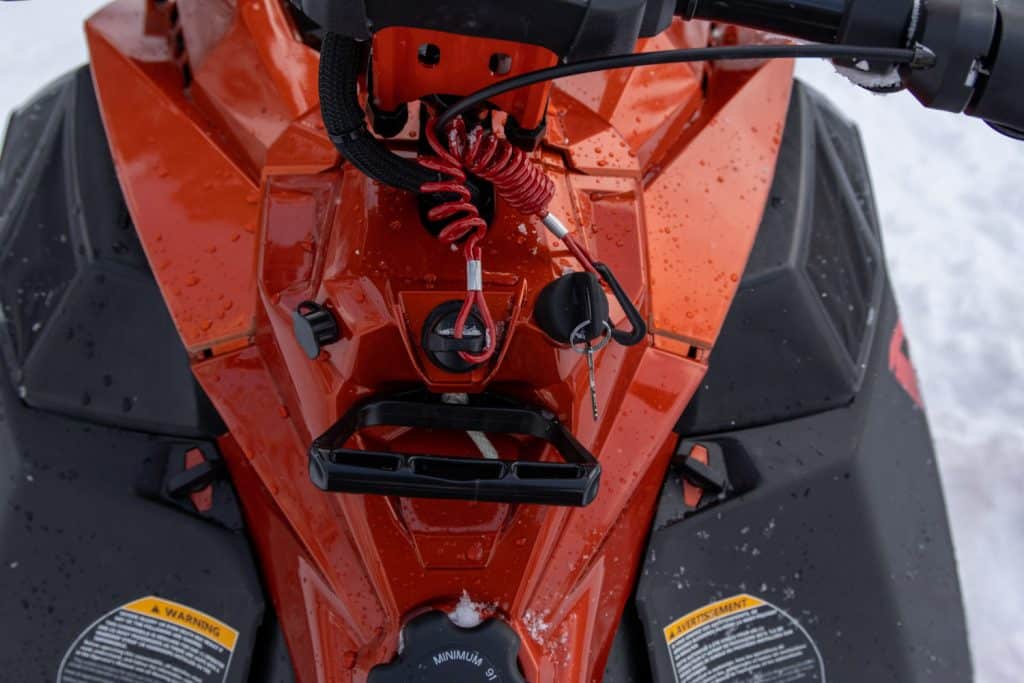
Those with a keen eye will have noticed that the non-slip portion of the Catalysts’ running boards is made of durable plastic. The lightness aspect probably played an important role in the selection of this material. Note that it is replaceable if ever there is a breakage. The future will tell us the truth about this choice.
Front suspension
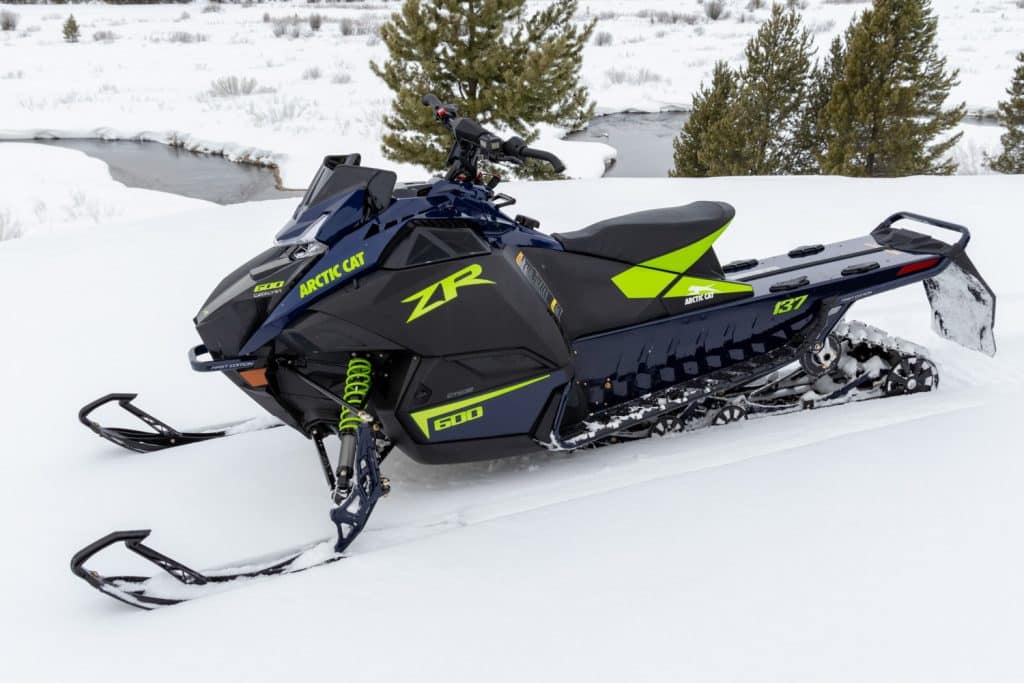
Those familiar with the old chassis will notice that the front suspension pivot arms are different from the 2023 models. Engineers lowered the upper A-arm and shortened the pivot arms for a more responsive, power steering-like ride. We’re told the steering is progressive to provide a lighter, more solid feel. Leverage reduces the effort to operate the handlebars.
They modified the position of the front and rear suspensions to provide a perfect balance on the car. Most importantly, the Catalyst’s cornering response is greatly improved. The steering uses a more responsive design that improves cornering behavior, and we actually noticed it.
ATACH system
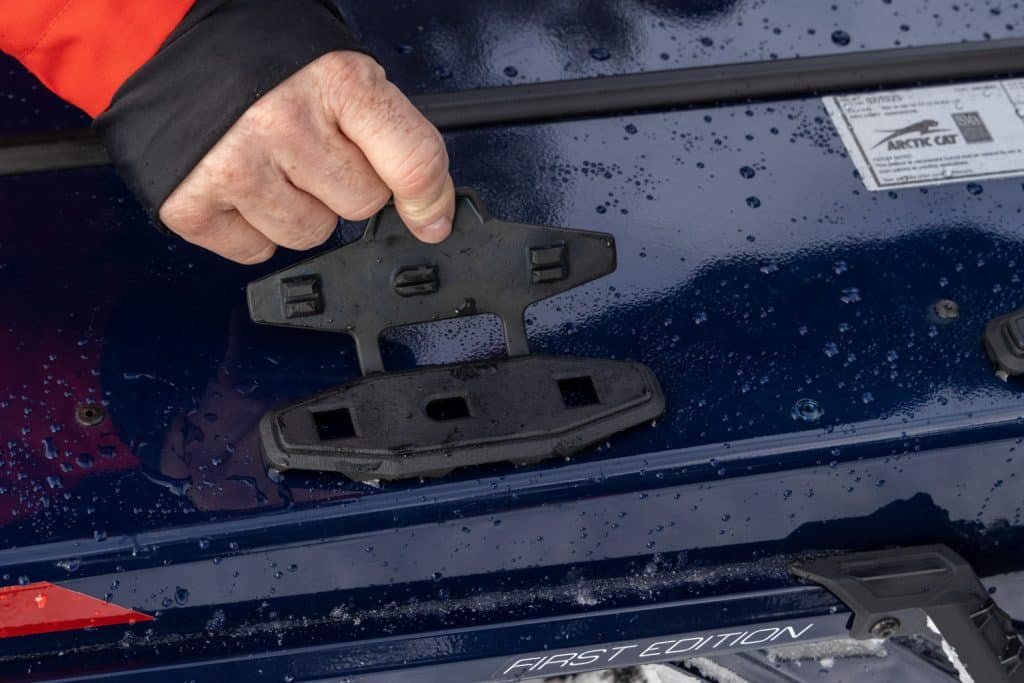
And yes! 2024 will also mark the arrival of the new quick release system to ensure the transportation of your luggage. Although all Catalysts snowmobiles at West YellowStone were equipped with these new attachments, no accessories were available during our tests. However, you can see them on the Arctic Cat website.
On the trail
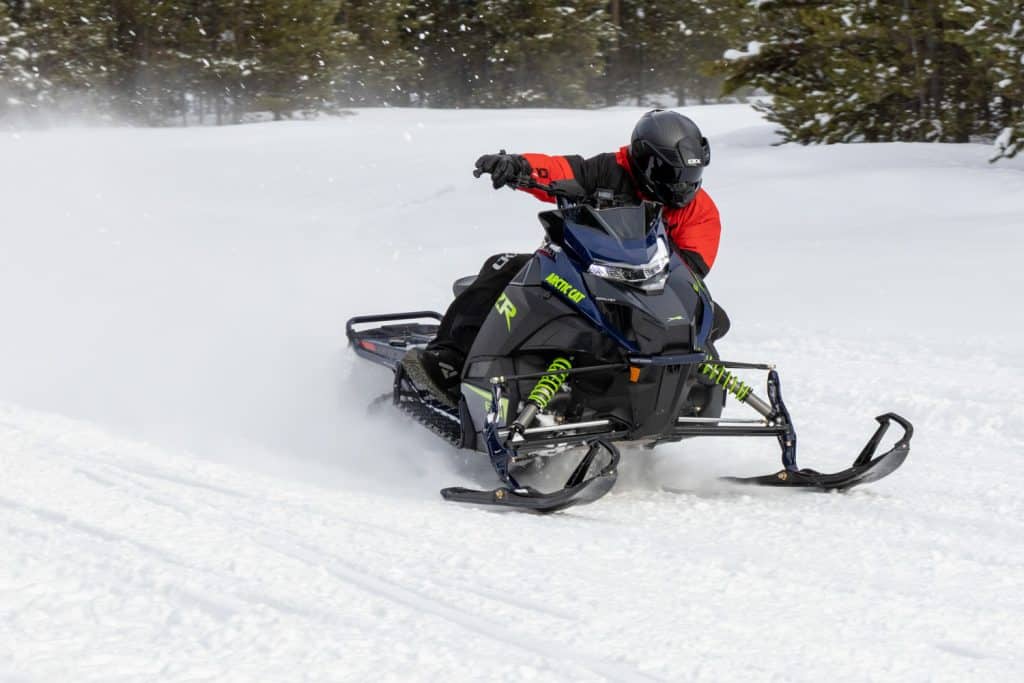
After a few kilometers, we can say that this chassis will definitely deliver the goods. The driving position gives us an incredible feeling of control! We just want to push the car even more and see what it can give us in return. For now, only one version is available for the trail. Offering no choice of engine, the Catalyst will come with high-pressure gas shocks and the 600 CC engine we’ve known for years. Performance-wise, the 600 does well. But everyone will agree that an upgrade will have to be done soon to keep up with the competition on this side.
On the suspension side, we tested the ZR 600 model, which is equipped with Arctic Cat’s IFP 1.5 shocks front and center, and the IFP 2.0 in the rear. In relaxed trail riding, this version does exactly what it’s supposed to. The suspension offers a good level of comfort, and will get you a lot of miles in a day. However, if you’re the type of rider who wants to push a little more at the end of the day, you’ll be better served with the 600 R-XC version! It has Qs3r shocks, which are much more efficient, or the version equipped with ATAC electronic suspension. The latter will give you even better performance.
Conclusion
After a few kilometers, we quickly noticed that the small modifications to the driving position made a big difference. You quickly feel confident, and you want to ask for more. The narrowness of the middle section greatly facilitates the rider’s left/right movements, and lets us expect total control. Passing through a series of bumps remains predictable and keeps us confident. However, better quality shocks will be required if you want to push a little more.
Without a doubt, we can bet that this new chassis will be a hit, but only one question remains: will fans wait one more season and hope for an 800 or 850 or 860 CC version for 2025? To be continued!



